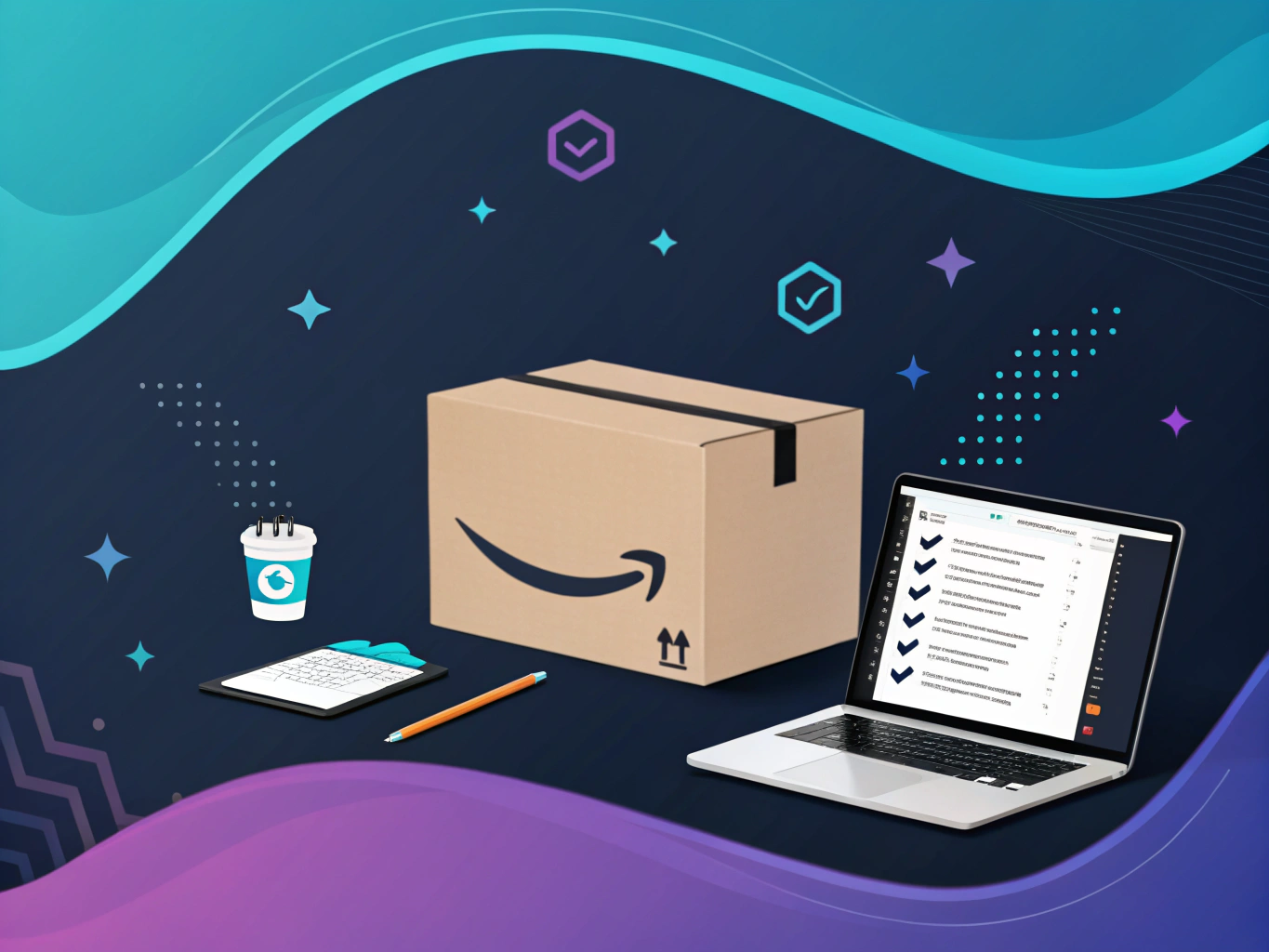Let’s be honest – selling on Amazon feels a bit like trying to navigate New York City during rush hour. Customer reviews play a crucial role, and everyone’s fighting for space, the rules seem to change daily, and there’s always that nagging feeling you might be doing it wrong. But here’s the thing: creating killer Amazon product listings isn’t rocket science. Amazon Brand Analytics is a tool that can help, and it’s more like cooking – you need the right ingredients, a solid recipe, and maybe a dash of creativity.

I’ve spent years helping brands optimize their Amazon presence, and I’ve seen everything from spectacular successes to facepalm-worthy failures. The difference often comes down to understanding one simple truth: Amazon is a search engine first, marketplace second. Think about that for a second. It’s not just about having great products – it’s about making them findable with backend keywords.
The Foundation: Setting Up Your Amazon Seller Account
Before we dive into the nitty-gritty of product listings, let’s talk about listing products on Amazon and getting your house in order. You wouldn’t build a skyscraper without a solid foundation, right? Same goes for your Amazon business.
Individual vs. Professional: Choosing Your Seller Plan
Here’s where many newcomers get stuck – choosing between Individual and Professional selling plans. The Individual plan ($0.99 per item sold) makes sense if you’re testing the waters with less than 40 items monthly. But if you’re serious about building an Amazon business, the Professional plan ($39.99/month) is your ticket to the big leagues. It unlocks bulk listing creation, advanced reporting, and those sweet promotional tools you’ll need later, including optimizing your Amazon product descriptions.
Creating Your First Amazon Product Listing

Now for the meat and potatoes – creating a product listing that actually sells. I’ve seen too many sellers treat their listings like a DMV form – just filling in the blanks without thought. For SEO mistakes, that’s about as effective as trying to sell ice to penguins.
The Art of the Perfect Product Title
Your title is prime real estate – think of it as your product’s Times Square billboard. You’ve got up to 200 characters to work with, but that doesn’t mean you should use them all. The key is balance. Include your primary keywords, but make it readable. Here’s a formula that works:
Brand Name + Product Line + Material/Key Feature + Product Type + Size/Quantity + Style/Color
Images: Your Visual Storytelling Arsenal
Listen, I don’t care if you’re selling the most amazing widget in the world – if your images look like they were shot with a potato, you’re dead in the water. Amazon’s requirements are clear, and you should consider photo size guidelines:
- Main image: Pure white background (RGB 255,255,255)
- Minimum 1000px on the longest side
- Square images (1:1 aspect ratio)
- Product should fill 85% of the frame
But meeting the bare minimum is like showing up to a job interview in sweatpants. You want to go beyond with lifestyle shots, detail images, size comparisons, and infographics. For those pursuing product photography jobs, show your product in action, solve problems before they’re asked.
Bullet Points That Actually Convert
Your bullet points aren’t just a list of features – they’re your elevator pitch. Each bullet should answer one question: “Why should I care?” Don’t just tell me it’s a stainless steel water bottle. Tell me how it keeps my coffee hot for 12 hours while I’m crushing deadlines at work.
The Secret Sauce: Keyword Research
Here’s where the magic happens. Keywords are the breadcrumbs that lead customers to your listing. But not all keywords are created equal. You need to think like your customer – what words would they actually use to search for your product? Consider ways to avoid common description pitfalls with chatbots.
Want a fast and visual way to uncover which keywords matter most in your niche? Try the Word Cloud Generator to spot recurring terms and themes from customer reviews and competitor listings.
Tools of the Trade
Sure, you could guess at keywords, but that’s like trying to find your way through Manhattan with your eyes closed. Instead, use tools like:
- Amazon’s Search Terms Report (if you’re running PPC)
- Helium 10
- Jungle Scout
- Scientific Seller
These tools show you exactly what customers are searching for and how competitive those terms are. It’s like having a GPS for your Amazon strategy.
Backend Search Terms: The Hidden Powerhouse
Backend search terms are like your product listing’s secret weapon. You get 250 bytes of space to include relevant keywords that might not fit naturally in your visible listing. No need for commas, punctuation, or repeated words – just pure, searchable gold. Check out more on writing descriptions effectively.
Remember: Amazon’s algorithm is smart enough to understand variations. You don’t need to include “water bottle”, “water bottles”, and “bottle for water” – the algorithm’s got you covered. To further enhance backend organization, the SKU Generator helps sellers generate structured and scannable product identifiers that streamline bulk listings and tracking.
Creating Optimized Product Listings

Let’s talk about the elephant in the room: creating Amazon product listings that actually convert. It’s like being a DJ at the world’s pickiest party – you need to mix just the right elements to get people moving (or in this case, buying).
Title Optimization: Your Product’s First Impression
Think of your product title as your elevator pitch – you’ve got about 200 characters to make it count. But here’s where most sellers mess up: they either stuff their titles with keywords until they’re unintelligible, or they write something so basic it might as well be invisible.
Here’s the secret sauce: structure your titles like this: [Brand] + [Product] + [Key Features] + [Size/Color/Quantity]. For example, “ProductScope Eco-Friendly Water Bottle, 32oz Stainless Steel, Leak-Proof with Smart Temperature Display, Matte Black” – see what I did there? It’s readable, keyword-rich, and actually tells customers what they’re looking at.
Visual Elements That Pop
You know that friend who only posts perfectly lit, expertly staged photos on Instagram? That’s the energy you need for your Amazon product images. But unlike social media, Amazon has some pretty specific rules about this stuff. For help with images, see photo resizing techniques.
Your main image needs a pure white background (RGB 255,255,255) – no artistic shadows or lifestyle shots here. Think of it as your product’s headshot for a corporate job interview. The rest of your images? That’s where you can let your creative flag fly.
Product Description Components That Actually Work
Remember when I said AI is like an intern? Well, here’s where that analogy gets interesting. While AI can help generate product descriptions, it often misses the human element that makes people click “Buy Now”. Your bullet points and description need to tell a story – not just list features.
Instead of “Made with high-quality materials,” try “Survives everything from coffee spills to toddler tantrums – we tested it ourselves.” See the difference? One’s a claim, the other’s a story that resonates.
Advanced Listing Strategies
Keyword Research That Actually Makes Sense
Here’s a truth bomb: most sellers approach keyword research like they’re playing darts blindfolded. They throw a bunch of high-volume keywords at their listing and hope something sticks. But that’s not how you win on Amazon in 2024.
Use Amazon’s Search Term Report (it’s like having access to customer’s thoughts) and combine it with third-party tools. But here’s the kicker – don’t just chase volume. Look for the sweet spot where search volume meets buyer intent. “Water bottle” might get tons of searches, but “leak-proof insulated water bottle for hiking” might actually convert better.
Explore our guide on personalized gifts for niche ideas.
Pricing Strategy: The Art of Not Leaving Money on the Table
Pricing on Amazon isn’t just about being the cheapest – it’s about finding that sweet spot where perceived value meets profitability. I’ve seen too many sellers race to the bottom on price, only to wonder why they’re working twice as hard for half the profit.
Dynamic pricing tools are great, but they need human oversight. Think of them like autopilot – fantastic for cruising altitude, but you want a human at the controls for takeoff and landing. Set your floor price based on your actual costs (including Amazon fees, shipping, and that coffee you need to keep going), then use tools to optimize within a reasonable range.
And for brand storytelling or product line naming, the AI Restaurant Name Generator is a creative tool—even beyond the food niche—to craft unique names that resonate with your audience.
Listing Management and Maintenance

Performance Tracking That Makes Sense
The beauty (and terror) of Amazon is that everything is measurable. But just because you can measure everything doesn’t mean you should obsess over every metric. Focus on the big three: conversion rate, session percentage, and organic ranking for your main keywords. For social media, learn how to repost on Instagram.
Think of your listing like a garden – it needs regular maintenance to thrive. Set up a monthly review schedule to check your metrics, update your content, and make sure you’re still competitive. And please, for the love of Bezos, don’t just set it and forget it.
If you’re building a boutique or private label store, use the Etsy Shop Name Generator to come up with memorable, SEO-friendly brand names that stand out on any platform—including Amazon.
Listing Health: Prevention is Better Than Cure
You know what’s worse than a poorly performing listing? A suppressed one. Amazon’s algorithm is like that one teacher who had really specific formatting requirements for assignments – mess up the rules, and you’re in trouble.
Regular content audits aren’t just busywork – they’re your insurance policy against listing suppression. Check for policy compliance, update your inventory levels, and make sure your variation relationships make sense. It’s like flossing – not fun, but way better than dealing with problems later.
And here’s something most guides won’t tell you: keep a backup of all your listing content, including images and A+ Content. Amazon’s system isn’t perfect, and having backups has saved my bacon more times than I’d like to admit. To better understand the impact of your current copy, leverage Sentiment Analysis to extract emotional cues from customer reviews and fine-tune your messaging to match what your buyers care about most.
Advanced Optimization Techniques
This is where we separate the pros from the rookies. A+ Content isn’t just about making your listing look pretty – it’s about creating a mini-website within Amazon that tells your brand story and answers every possible customer question before they can ask it.
Think about it like this: your regular listing content is like a first date – you’re putting your best foot forward. A+ Content is like meeting the parents – you’re showing depth, commitment, and why you’re in it for the long haul.
The real magic happens when you start thinking globally. International listings aren’t just translations – they’re cultural adaptations. What works in the US might fall flat in Japan, and what’s popular in Germany might be irrelevant in Brazil. This is where having a human touch (and preferably, local market knowledge) becomes invaluable.
Advanced Listing Strategies for Amazon Success

Here’s the thing about Amazon product listings – they’re a lot like those choose-your-own-adventure books we read as kids. Every decision you make shapes the story (or in this case, your success). And just like those books, there’s usually more than one path to a happy ending.
Mastering Keyword Implementation
Let’s talk about keywords – not the dry, technical SEO stuff, but the real strategy behind them. Think of keywords as the breadcrumbs that lead customers to your product. Amazon’s A9 algorithm isn’t some mystical beast; it’s more like a really diligent librarian who wants to match readers with the perfect book.
I’ve seen too many sellers stuff their amazon product listings with keywords like they’re filling a thanksgiving turkey. That’s not how this works. Instead, focus on natural language patterns. How do real people search? They don’t type “premium ergonomic office chair lumbar support professional,” they search “comfortable office chair for back pain.” Check out our description guidelines.
The Price Is Right (Until It Isn’t)
Pricing on Amazon isn’t just about numbers – it’s psychology. You’re not just competing with other sellers; you’re competing with customer expectations. I’ve found that using dynamic pricing tools isn’t about winning the race to the bottom, it’s about finding the sweet spot where value meets profit.
Future-Proofing Your Amazon Product Listing Strategy
The ecommerce landscape changes faster than Marvel releases new movies. What worked for your amazon product listing last year might not cut it tomorrow. Here’s where AI tools (like ProductScope AI, if you’ll excuse the shameless plug) come in handy – they help you stay ahead of trends without losing sleep over every algorithm update.
Emerging Trends That Actually Matter
- Voice search optimization (because talking to Alexa is the new normal)
- Mobile-first design (over 70% of Amazon browsing happens on phones)
- Sustainability attributes (because customers increasingly care about environmental impact)
- Video integration (showing is always better than telling) – create engaging Instagram stories.
Building a Competitive Moat
Want to know how to sell on Amazon successfully long-term? It’s about building systems that scale. Regular content audits aren’t just bureaucratic exercises – they’re your early warning system for when things need updating.
Think of your amazon product listing as a living document. It needs regular feeding (updates), exercise (optimization), and checkups (performance monitoring). And just like a good fitness routine, consistency beats intensity every time.
Troubleshooting Common Issues
Let’s be real – things go wrong. Listings get suppressed, competitors file bogus IP claims, and sometimes Amazon’s own systems throw curveballs. The key isn’t avoiding problems (that’s impossible); it’s having a plan to handle them quickly.
When Things Go Sideways
Here’s what I’ve learned from helping thousands of brands with their Amazon stores: document everything. Every change, every communication with Seller Support, every weird glitch. It’s like having a dash cam – you hope you never need it, but when you do, it’s priceless.
The Future of Amazon Selling
Starting an amazon store today looks very different from five years ago. The platform is more sophisticated, the competition is fiercer, and the opportunities are bigger. But here’s what hasn’t changed: the fundamentals of good business still apply.
Embracing AI Without Losing the Human Touch
AI tools are transforming how we create and optimize listings. They’re like having a super-powered intern who never sleeps. But here’s the catch – they’re tools, not replacements for human judgment. The best amazon product listing strategies combine AI efficiency with human creativity.
Final Thoughts: Your Amazon Journey
Whether you’re figuring out how to become an amazon seller or you’re looking to optimize your existing store, remember this: success on Amazon isn’t about gaming the system. It’s about building a sustainable business that serves real customers with real needs.
The best part about selling on Amazon? You can start small. You can sell on Amazon for free with an individual account, test the waters, and scale up as you learn. The platform rewards sellers who focus on customer experience and continuous improvement.
Action Steps for Success
- Audit your listings monthly
- Test new optimization strategies quarterly
- Keep detailed records of what works (and what doesn’t)
- Stay informed about platform changes
- Build relationships with other sellers
Remember, success on Amazon isn’t a destination – it’s a journey. And like any good journey, it’s not just about reaching the destination; it’s about what you learn along the way. Keep experimenting, stay curious, and don’t be afraid to try new approaches.
The ecommerce landscape will keep evolving, but the fundamentals of good business remain constant: understand your customer, provide value, and always be learning. That’s how you build a sustainable Amazon business that stands the test of time.
For further guidance, explore Amazon’s official resources to ensure compliance and optimize your strategies.
👉👉 Create Photos, Videos & Optimized Content in minutes 👈👈
Related Articles:
- The Impact of Customer Reviews on Your Amazon Product Listings
- A Guide to Amazon Brand Analytics for Listing Optimization 2024
- 4 Best Product Photography Jobs for Amazon Listing Conversions
- Optimize Your Amazon Listings With AI
- Professional Amazon Listing Services: How to Maximize Sales
- Product Description Writing That Converts: A Guide
Frequently Asked Questions
What is an Amazon product listing?
An Amazon product listing is a detailed page on Amazon’s platform where a seller provides information about a specific product they are selling. It includes elements such as the product title, images, descriptions, features, and customer reviews, all designed to help customers make informed purchasing decisions.
How to create an Amazon product listing?
To create an Amazon product listing, you start by logging into your Seller Central account, then select ‘Inventory’ and ‘Add a Product’. Follow the prompts to either match an existing product or create a new listing by entering details such as product identifiers (like UPC or EAN), title, description, images, and price. Be sure to optimize your listing with clear descriptions and high-quality images to attract more buyers.
Is product listing on Amazon free?
While creating a product listing itself on Amazon is free, selling on Amazon may involve various fees depending on your seller plan. Individual sellers pay a per-item fee, while professional sellers pay a monthly subscription fee; both may incur referral and closing fees, which vary by product category.
How do I make a list of Amazon products?
To make a list of Amazon products, you can use Amazon’s List feature, which allows you to create and manage lists of products you are interested in purchasing. Simply navigate to the ‘Accounts & Lists’ dropdown and select ‘Create a List’, then add products by clicking ‘Add to List’ on each product page.
What is an Amazon product listing job?
An Amazon product listing job typically involves creating and managing product listings on Amazon’s platform for a business or as a freelancer. Responsibilities may include writing product descriptions, optimizing listings for search, updating inventory, and analyzing sales data to improve listing performance.
About the Author
Vijay Jacob is the founder and chief contributing writer for ProductScope AI focused on storytelling in AI and tech. You can follow him on X and LinkedIn, and ProductScope AI on X and on LinkedIn.
We’re also building a powerful AI Studio for Brands & Creators to sell smarter and faster with AI. With PS Studio you can generate AI Images, AI Videos, Chat and Automate repeat writing with AI Agents that can produce content in your voice and tone all in one place. If you sell on Amazon you can even optimize your Amazon Product Listings or get unique customer insights with PS Optimize.
🎁 Limited time Bonus: I put together an exclusive welcome gift called the “Formula,” which includes all of my free checklists (from SEO to Image Design to content creation at scale), including the top AI agents, and ways to scale your brand & content strategy today. Sign up free to get 200 PS Studio credits on us, and as a bonus, you will receive the “formula” via email as a thank you for your time.
